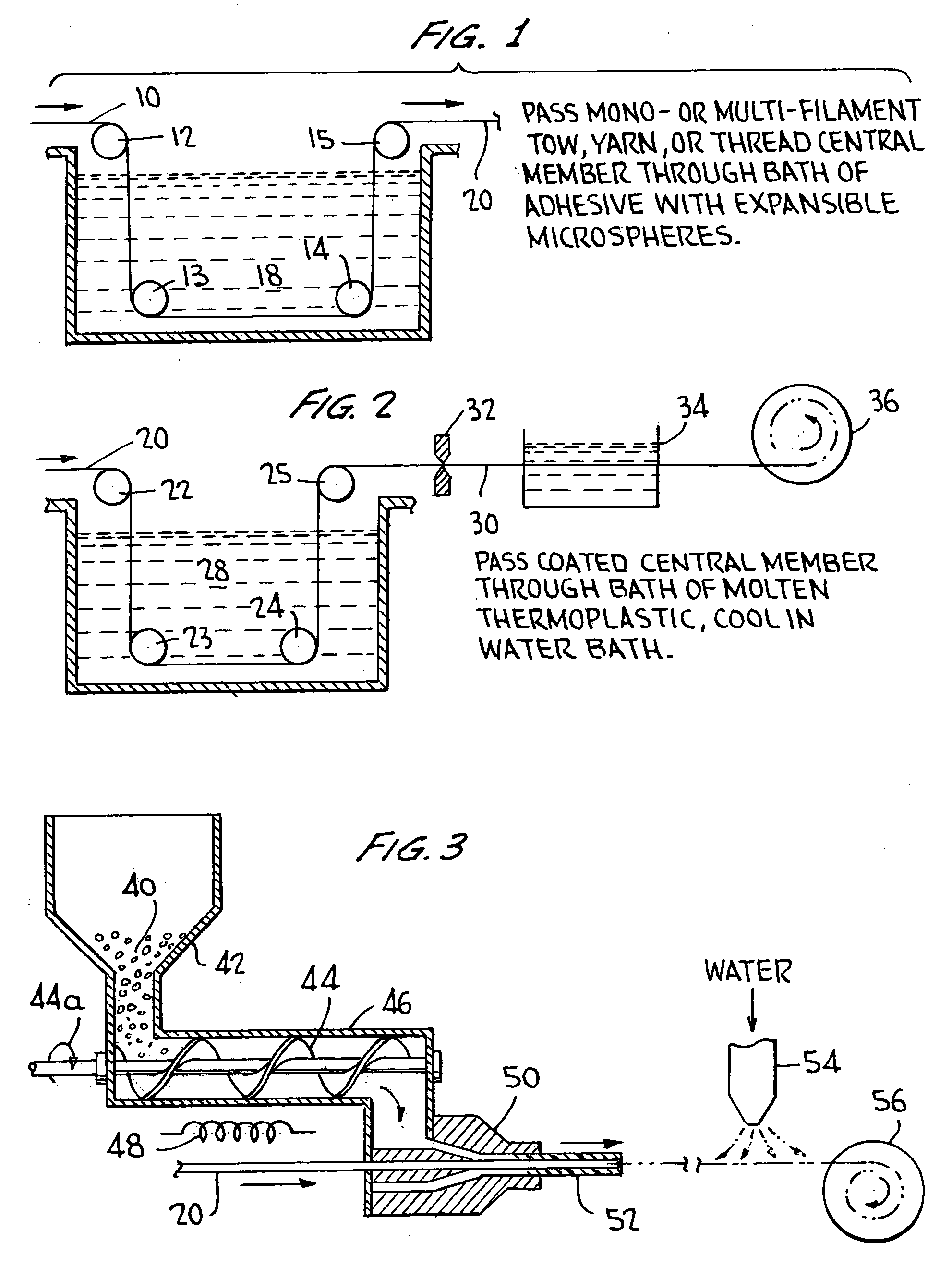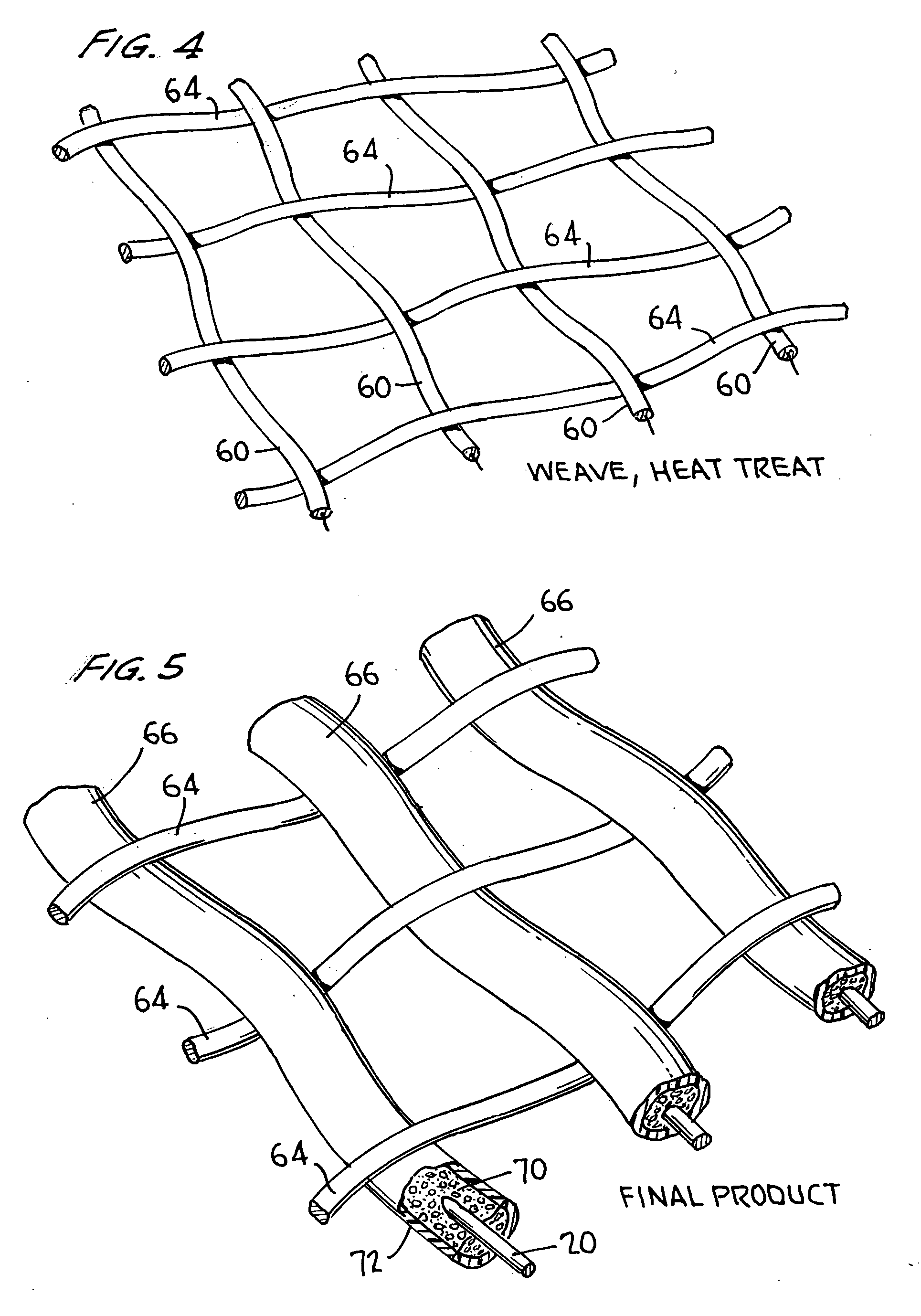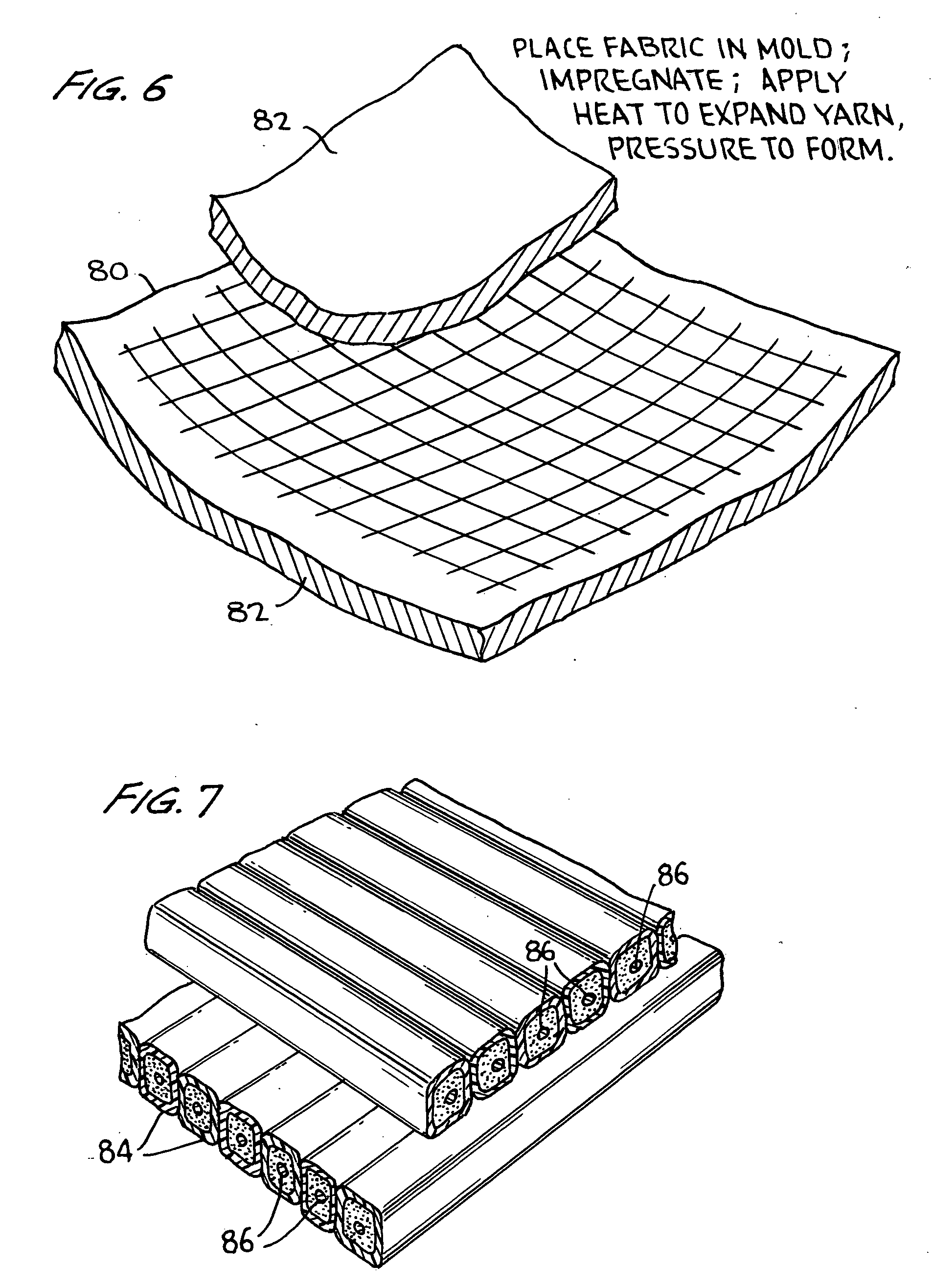Expansible yarns and threads, and products made using them
a technology applied in the field of yarn and thread, to achieve the effect of reducing porosity and high strength
- Summary
- Abstract
- Description
- Claims
- Application Information
AI Technical Summary
Benefits of technology
Problems solved by technology
Method used
Image
Examples
Embodiment Construction
[0033] As noted briefly above, the invention comprises the method of forming a precursor yarn or thread which can then be heat-treated to cause it to expand, as well as the yarns thus formed, processes for using the yarns, and the products manufactured thereby. The precursor yarn or thread is made by passing a central filamentary member through a first bath comprising a quantity of microspheres in an adhesive binder, so that the central member is coated by the microspheres. The coated central member thus formed is then sheathed by a thermoplastic layer, which can be added in a second bath, or in an extrusion step. This precursor yarn or thread can then be woven into a fabric, used to sew fabrics together, or put to any of a number of further uses, and can then be expanded, modifying the properties of the product in various useful ways.
[0034] The terms “yarn” and “thread” are being used herein, as generally in the art, to indicate larger or smaller filamentary products, respectively...
PUM
| Property | Measurement | Unit |
|---|---|---|
| diameter | aaaaa | aaaaa |
| diameter | aaaaa | aaaaa |
| diameter | aaaaa | aaaaa |
Abstract
Description
Claims
Application Information
 Login to View More
Login to View More - R&D
- Intellectual Property
- Life Sciences
- Materials
- Tech Scout
- Unparalleled Data Quality
- Higher Quality Content
- 60% Fewer Hallucinations
Browse by: Latest US Patents, China's latest patents, Technical Efficacy Thesaurus, Application Domain, Technology Topic, Popular Technical Reports.
© 2025 PatSnap. All rights reserved.Legal|Privacy policy|Modern Slavery Act Transparency Statement|Sitemap|About US| Contact US: help@patsnap.com



